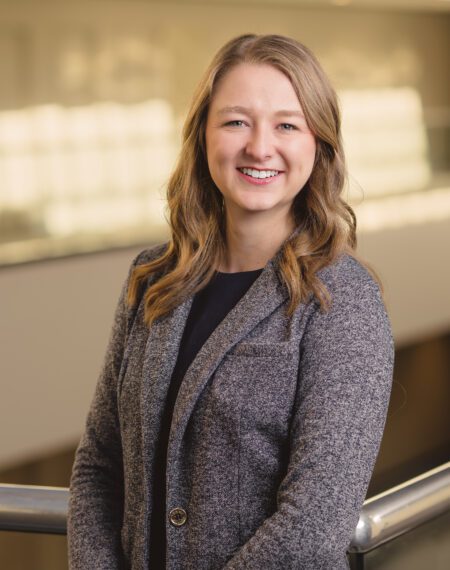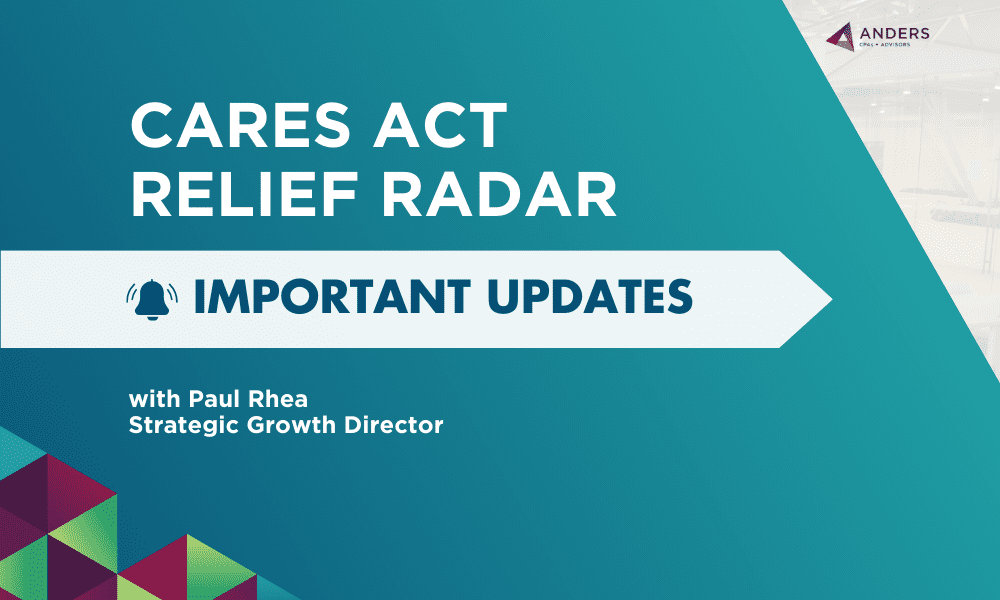As a follow-up to our recent Not-for-Profit Symposium, we’re revisiting how not-for-profits can utilize remaining funds given out through the Coronavirus Aid, Relief and Economic Security (CARES) Act. While many program applications have closed, there are still some options to consider that were covered in our not-for-profit symposium that could benefit your organization in the long run. One item to keep in mind while going through the updates below is that you cannot use the same wages or expenses for multiple programs.
Apply for Paycheck Protection Plan (PPP) Loan Forgiveness
The Paycheck Protection Plan (PPP) was a part of the CARES Act that offered forgivable loans to not-for-profits and businesses financially impacted by the pandemic. While PPP applications ended in May 2021, now is the time to apply for forgiveness if you did receive a PPP loan. To be eligible for forgiveness, at least 60% of the forgivable loan should have been spent on payroll costs; other qualifying expenses include including:
- Utilities
- Rent or lease payments
- Mortgage interest
- Operations expenditures
Be Aware of Employee Retention Tax Credit (ERTC) Changes
The ERTC was created to encourage employers to retain employees during the pandemic. The Infrastructure Investment and Jobs Act (IIJA), recently signed by President Biden retroactively ended the ERTC as of September 30, 2021. This change means that employers of recovery startup businesses, including eligible not-for-profit organizations, are still eligible for the credit going into 4th quarter if they meet the following criteria:
- Began carrying on a trade or business after February 15, 2020, and
- Had average annual gross receipts of less than $1 million
If an employer meets these criteria, they are still eligible for the ERTC and up to $50,000 startup business credit maximum. If you have retained payroll taxes in anticipation of receiving the ERTC in the 4th quarter, those will need to be repaid and we suggest reviewing your situation with your advisors to determine how and when to repay those taxes. While the IRS has not provided guidance on how to do this yet, we anticipate they will shortly to further assist employers handling these issues.
Updated 9/15/2023: Due to the IRS ERTC moratorium, Anders will no longer be accepting new ERTC clients until the IRS issues additional guidance related to this moratorium and the options available to affected businesses. Learn more about the IRS’s ERTC moratorium.
Consider an Economic Injury Disaster Loan (EIDL) Increase or Advance
The EIDL program is one of the few programs that is still open. If you previously received a loan, you can now apply for an EIDL increase if it makes sense for your organization. For not-for-profits, these loans offer a 2.75% fixed interest rate with no payments required for two years after receiving the loan. The EIDL can be used for the following expenses:
- Operating expenses, payroll, rent/mortgage, utilities other ordinary business expenses
- To pay debt incurred at any time (past, present or future)
Another option under this program is the Target EIDL Advance designed for the hardest hit businesses and private not-for-profits. The advance is up to $10,000 cash and is not a loan that needs to be paid back. To qualify, you must be in a low-income community and have seen a 30% reduction in revenue. Applicants must apply for an EIDL by December 31, 2021. However, if you qualify for the advance, you do not have to then accept the loan. The advance is basically tax-free grant money that you do not have to repay, unlike a loan that will be repaid. Learn more about the Target EIDL Advance on SBA’s website.
Increase Your Shuttered Venue Operators Grant Program (SVOG)
The SVOG program offered relief to entertainment venues throughout the pandemic with few restrictions on how you could use the funds. While new applications for this grant ended in August 2021, if you previously received funds through this program, you could still apply for a supplemental application for 50% of the original award amount.
Keep in mind that not-for-profits who received a SVOG over $750,000 will need a Uniform Guidance audit.
Our advisors are closely following credit and program changes and will continue to publish insights to keep you informed. To discuss how we can best assist you and the associated fees, contact an Anders advisor below.





